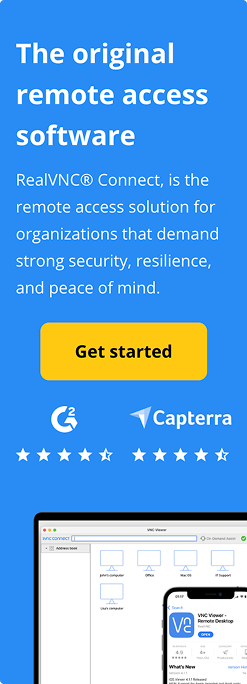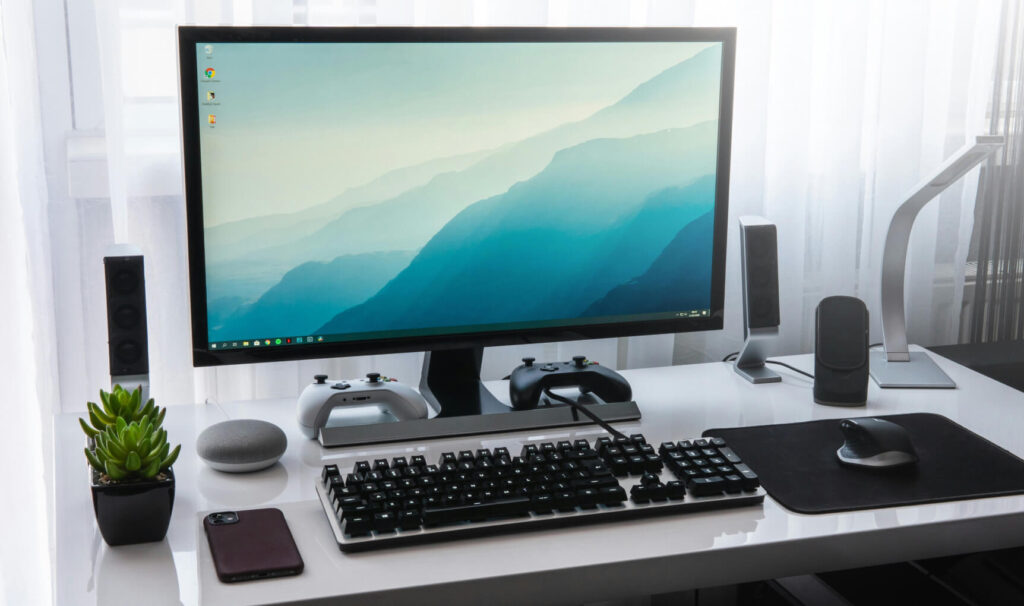Can augmented reality (AR) revolutionize the manufacturing sector, or is it just another tech gimmick? In the high-stakes world of production lines, AR isn’t merely a trendy tech upgrade—it represents a transformative shift in how tasks are executed and optimized.
By merging digital insights with the physical environment, AR enhances training, maintenance, and quality control, offering operators real-time contextual information to streamline complex processes.
This blog post looks into everything you need to know about AR in manufacturing, spotlighting its fundamental role in driving digital transformation and operational efficiency on the factory floor.
Understanding Augmented Reality in Manufacturing Fundamentals
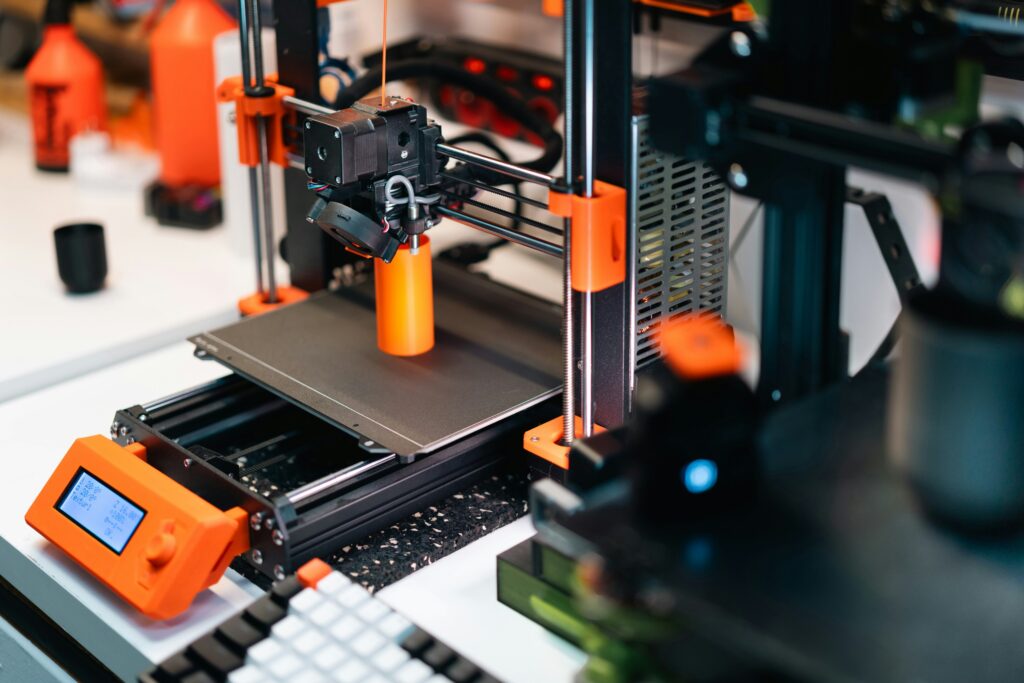
Image: Unsplash
Augmented reality (AR) in manufacturing revolutionizes how operators interact with their environments by seamlessly blending digital visualizations with the physical world. This technology provides real-time contextual information, significantly enhancing processes like training, maintenance, assembly, and quality control.
By integrating digital artifacts into the physical space, AR allows for interactive and hands-free operations. It enables the rapid creation of digital work instructions and standard operating procedures (SOPs), ensuring consistency and precision in task execution.
A key advantage of AR is its ability to simplify complex tasks, reducing production errors and driving digital transformation on the factory floor. This transformation is achieved through plant visualization technology, which offers operators detailed insights into equipment and processes. As a result, manufacturers can optimize workflows, improve operational efficiency, and ensure higher compliance with industry standards.
In summary, augmented reality in manufacturing is not just about overlaying digital information onto physical objects. It represents a strategic shift towards smarter, more efficient production environments. By providing operators with the tools and information they need in real-time, AR empowers them to perform their roles more effectively, ultimately leading to enhanced productivity and reduced downtime.
Definition and Explanation of AR in Manufacturing
Augmented reality (AR) in manufacturing refers to the innovative use of AR technology to enhance various aspects of the manufacturing process by overlaying digital information onto real-world objects. This integration aims to boost productivity, efficiency, and quality control by providing workers with real-time data and instructions directly in their line of sight.
AR technology employs devices such as smart glasses, tablets, and other wearables to display virtual information, including work instructions, assembly guides, and quality control checklists, onto the physical environment.
This seamless blend of digital and physical realms allows workers to access critical information precisely when and where they need it, significantly reducing errors and enhancing overall manufacturing operations. By leveraging AR solutions, manufacturers can streamline complex processes, ensure consistency, and maintain high standards of quality throughout the manufacturing process.
Additionally, AR helps to save money on travel costs and accommodation of experts through regular maintenance and operational audits. This cost-saving potential is further enhanced when AR is combined with remote access platforms like RealVNC Connect, which offers secure, cross-platform access to manufacturing systems.
Regardless of the operating system or equipment type, be it a Linux-based machine on the factory floor or even a proprietary appliance, users can connect remotely from a standard Windows PC in the office, or a variety of other devices. RealVNC Connect can help technicians perform diagnostics, provide support, or monitor operations in real time without having to travel on-site.
Key Technologies and Applications in Augmented Reality Manufacturing
Image: Unsplash
Augmented reality (AR) in manufacturing uses advanced technologies to deliver real-time data visualization, digital work instructions, and interactive quality inspections. At the core of AR integration are digital overlays that project schematics and step-by-step guides directly onto machinery. This capability enhances assembly accuracy and facilitates maintenance procedures by providing workers with immediate, hands-free access to critical information.
Manufacturers benefit significantly from overlay-driven production boosts. These digital overlays act as a visual aid that simplifies complex tasks, ensuring that assembly processes are executed with precision. By integrating real-time process guidance, AR technology helps reduce error rates and streamline workflows, leading to improved operational efficiency.
Interactive maintenance support is another key application of AR in manufacturing. By overlaying diagnostic data onto equipment, technicians can quickly identify and resolve issues, minimizing downtime. This interactive support extends to quality inspections, where AR can enhance defect detection and ensure product consistency. AR remote assistance enables field technicians to receive real-time guidance from experts, enhancing their ability to resolve problems efficiently without the need for additional on-site personnel. Real-time AR assistance also enhances communication between on-site and off-site teams, ensuring seamless collaboration and faster issue resolution.
Additional tools, such as process optimization software and assembly line simulation tools, further augment the capabilities of AR. These tools enable manufacturers to simulate production environments and test various scenarios, allowing for proactive adjustments and continuous improvement.
The integration of AR technologies provides manufacturers with a comprehensive understanding of their operations, enabling them to make informed decisions that enhance productivity. By incorporating AR into their manufacturing processes, companies can achieve significant gains in efficiency, reduce costs associated with errors and downtime, and maintain high standards of quality control.
Types of Augmented Reality Devices
In the manufacturing industry, several types of AR devices are utilized to enhance various operations:
- Smart Glasses: These wearable devices project virtual information directly onto the real world, providing hands-free access to work instructions, assembly guides, and real-time data. Smart glasses are particularly useful for tasks that require both hands, allowing workers to follow detailed instructions without interruption.
- Tablets: Handheld devices that display AR work instructions and provide real-time feedback. Tablets are versatile tools that can be used for a range of applications, from assembly operations to quality control checks, offering a portable and interactive way to access critical information.
- AR Glasses: Specialized glasses designed to overlay virtual information onto the real world. These devices are often used for quality control checklists and maintenance guides, helping workers to identify and address issues quickly and accurately.
- Projectors: Devices that project virtual information onto the physical environment. Projectors can be used to display assembly guides and work instructions directly onto work surfaces, providing a clear and visible reference for workers.
While many AR-enabled devices run on highly customized systems, tablets and other mobile platforms that use standard operating systems can benefit from integration with remote access tools like RealVNC Connect. For example, teams can remotely access AR software running on a tablet to monitor processes or offer support without being on-site.
RealVNC Connect and AR enables new employees to train and safely interact with this technology in real time, without needing to even set foot on the factory floor.
The number of AR smart glasses shipments in the manufacturing sector is expected to reach 27 million by 2025.
Each of these AR devices plays a crucial role in enhancing manufacturing processes by providing real-time data and interactive guidance, ultimately improving efficiency and accuracy.
Real-World Use Cases of Augmented Reality in Manufacturing
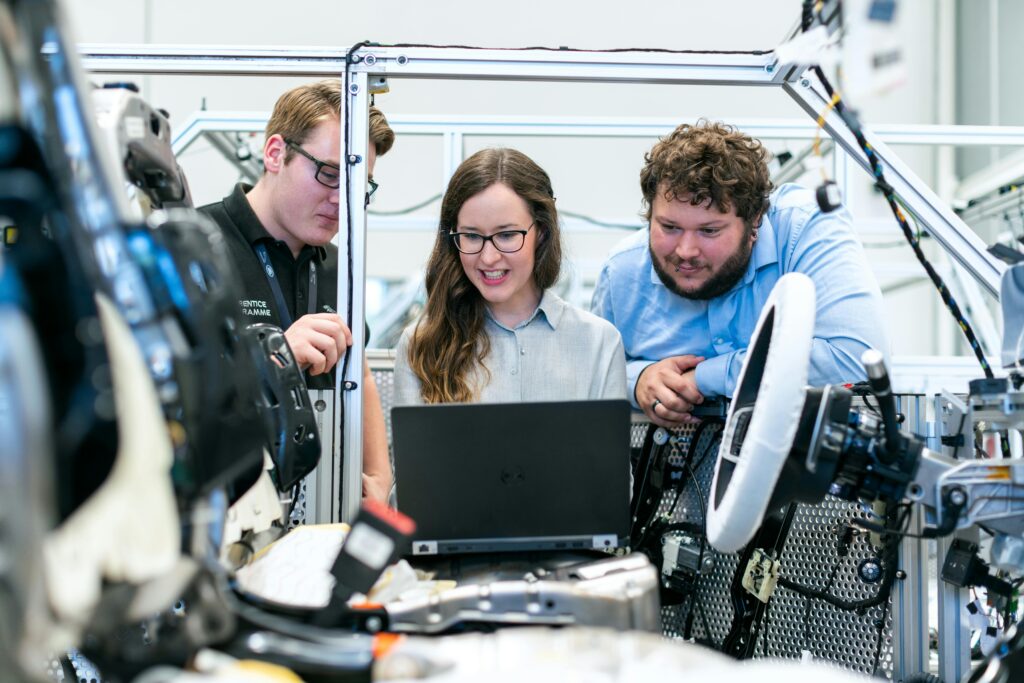
Image: Pexels
Augmented reality (AR) is reshaping manufacturing by delivering practical solutions that enhance productivity and precision. A primary use case is worker training with smart glasses, which has demonstrated a reduction in training times by as much as 50%. These devices provide immersive, hands-free guidance, allowing new employees to quickly learn complex procedures with greater retention.
In maintenance, AR offers interactive, remote troubleshooting solutions that significantly decrease machine downtime. By overlaying diagnostic information directly onto equipment, technicians can swiftly identify and resolve issues, cutting downtime by 20–25%. This capability is further supported by secure tools like RealVNC Connect, which enable remote support for systems running AR applications’ interfaces as long as they are not customized. Technicians and support staff can access AR-enabled platforms from off-site locations, ensuring faster issue resolution and seamless communication during maintenance and inspection processes.
Assembly lines also benefit from AR through hands-free visual quality inspection systems. These systems improve defect detection and enhance product consistency, reducing assembly errors by up to 30%. Workers are guided through each step with virtual overlays that indicate proper component placement and highlight errors, thereby boosting overall productivity.
AR’s application extends to quality control, where it augments defect recognition accuracy. Early studies suggest that inspection precision can be improved by as much as 40% with AR support, resulting in reduced scrap rates and improved product quality.
The synergy between AR and remote access solutions underscores the transformative potential of these technologies in manufacturing. By integrating AR with secure platforms like RealVNC Connect, manufacturers can achieve significant operational efficiencies, ensuring robust and reliable systems across their production environments.
Benefits, ROI, and RealVNC Connect’s Role in Augmented Reality Manufacturing
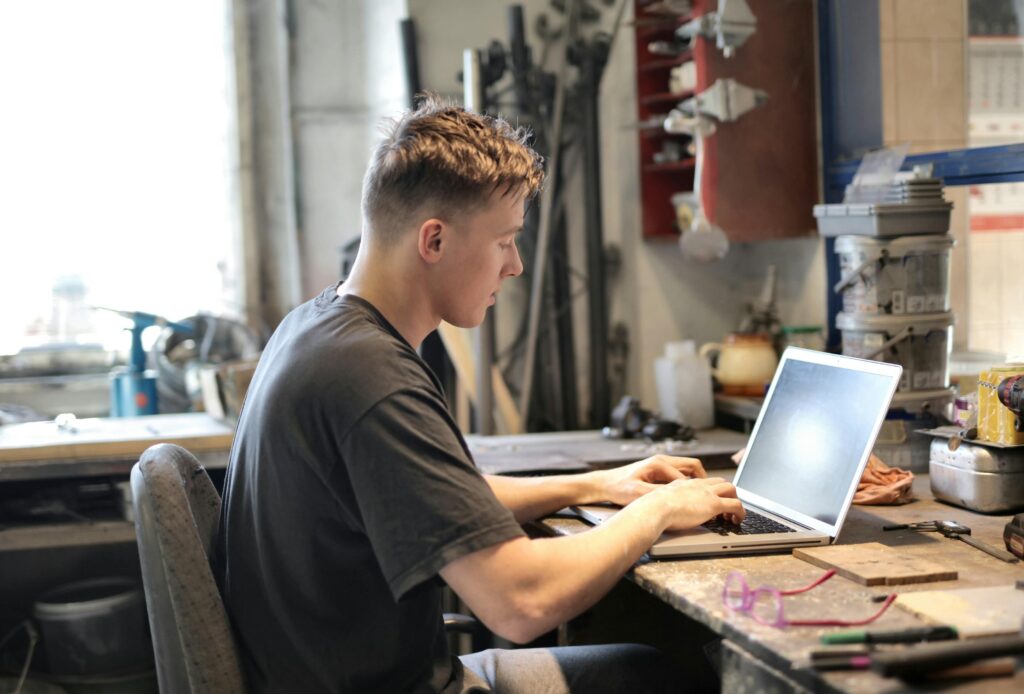
Image: Pexels
Augmented reality (AR) in manufacturing offers numerous tangible benefits, notably a substantial ROI. Companies integrating AR have reported returns as high as 448%, with the technology driving significant improvements in operational efficiency and cost savings.
Key components contributing to these gains include enhanced assembly processes and advanced defect detection systems. By overlaying digital instructions and real-time analytics onto physical environments, manufacturers can streamline workflows and reduce error rates, resulting in fewer production halts and improved product quality.
Operational efficiency improves significantly when AR-enabled maintenance is paired with secure remote access. Tools like RealVNC Connect allow technicians and engineers to access on-site systems from anywhere, diagnose issues in real-time, and guide repairs without setting foot on the factory floor. Its end-to-end desktop encryption, granular access controls, and cross-platform compatibility ensure secure connections across the entire operation.
Because RealVNC Connect works seamlessly across Linux, macOS, Windows, iOS, and Android, manufacturers can remotely manage a wide range of AR-enabled devices and industrial systems without investing in platform-specific tools. This flexibility not only reduces overhead and device costs but also supports a more connected, collaborative environment.
By enabling remote troubleshooting, live monitoring, and instant collaboration, RealVNC Connect complements AR applications to reduce downtime, cut travel expenses, and maintain continuous production. Together, these technologies support a more agile, cost-efficient manufacturing setup that’s ready to adapt to changing demands.
Increased Productivity and Efficiency
AR solutions in manufacturing significantly boost productivity and efficiency by providing workers with real-time data and instructions. This immediate access to information reduces errors and streamlines manufacturing operations. For instance, during assembly operations, AR can display virtual assembly guides and step-by-step instructions, ensuring that each component is correctly placed and assembled. In maintenance and repair processes, AR provides real-time data and diagnostic information, enabling workers to quickly identify and resolve issues, thereby reducing downtime.
Additionally, AR solutions enhance worker training and onboarding by offering interactive and immersive experiences that shorten training times and improve knowledge retention. Augmented reality can also offer new hires in-context instructions authored by a company’s expert in the form of a digital mentor. By integrating AR technology into their processes, manufacturers can achieve higher efficiency, reduce operational errors, and maintain a more productive workforce.
Enhanced Safety and Quality
AR solutions in manufacturing play a pivotal role in enhancing safety and quality. By providing workers with real-time data and instructions, AR reduces the likelihood of errors and improves overall manufacturing operations. Virtual safety warnings and alerts can be displayed to workers, enhancing their awareness of potential hazards and reducing the risk of accidents.
In terms of quality control, AR provides real-time data and instructions that help workers identify defects and ensure product consistency. This leads to a reduction in defects and an improvement in overall product quality. Additionally, AR enhances maintenance and repair processes by providing real-time data and instructions, which reduces downtime and improves equipment reliability. By integrating AR solutions, manufacturers can create a safer work environment and maintain high standards of quality in their products.
Implementing Augmented Reality in Manufacturing
Implementing AR solutions in manufacturing requires a strategic approach to ensure successful adoption and integration. The process begins with identifying areas of improvement within manufacturing operations and processes where AR can provide the most significant benefits. Once these areas are identified, selecting the right AR technology and devices tailored to the specific use case is crucial. Developing and deploying AR work instructions and training programs is the next step, ensuring that workers are well-equipped to utilize the new technology effectively.
Integrating AR solutions with existing manufacturing systems and software is essential for a seamless transition and to maximize the benefits of AR. This integration becomes even more effective when supported by tools like RealVNC Connect, which provide secure remote access to the systems running AR software. This enables off-site teams to offer technical support, monitor performance, and assist with updates across manufacturing environments.
Finally, providing ongoing support and maintenance is vital to ensure the continued success and optimization of AR solutions. By following this strategic approach, manufacturers can effectively implement AR technology and achieve substantial improvements in their operations.
Digital Work Instructions
Digital work instructions are a cornerstone of AR solutions in manufacturing, providing workers with real-time data and step-by-step guidance to enhance productivity and efficiency. These instructions can be created and deployed using AR software and devices such as smart glasses and tablets. Digital work instructions are particularly beneficial in assembly operations, where they ensure that each step is performed correctly, reducing errors and improving overall quality. In maintenance and repair processes, digital work instructions provide real-time data and diagnostic information, enabling workers to quickly address issues and minimize downtime.
Additionally, digital work instructions play a crucial role in quality control by providing detailed checklists and real-time feedback, ensuring that products meet the required standards. Augmented reality work instructions also standardize training across an enterprise in one click. By leveraging digital work instructions, manufacturers can streamline their operations, reduce errors, and maintain high levels of quality and efficiency.
Challenges and Security Considerations in Augmented Reality Manufacturing

Image: Pexels
Augmented reality (AR) in manufacturing presents exciting opportunities, but it also introduces challenges that must be addressed to harness its full potential. One significant hurdle is the high initial implementation cost, which can be a barrier for manufacturers considering AR integration. To offset these costs, companies should explore industrial integration innovations that streamline deployment processes and improve return on investment.
Comprehensive employee training is another critical consideration. As AR technologies evolve, employees must be equipped with the skills necessary to operate and maintain these systems effectively. Adopting digital maintenance techniques, such as interactive training modules and real-time support, can facilitate smoother transitions and ensure that staff are well-prepared to leverage AR capabilities.
Cybersecurity is a paramount concern as augmented reality systems increasingly depend on real-time data exchange and integration with wider manufacturing networks. The growing connectivity between AR platforms and operational systems increases the risk of unauthorized access, data breaches, and disruptions. To mitigate these risks, manufacturers must adopt remote access tools with robust security protocols.
Imagine needing to access a secure interface on a critical machine, similar to how a medical professional might retrieve data from a patient’s diabetes sensor. During the COVID-19 pandemic, this was exactly the case in the UK, where NHS doctors used RealVNC Connect to securely access patient records and prescribe treatments from home while meeting strict data protection requirements. In highly regulated environments like healthcare—and increasingly in manufacturing—secure remote access plays a vital role in maintaining both continuity and compliance.
Tools like RealVNC Connect support this need by offering end-to-end encryption, granular access controls, session auditing, and multi-factor authentication—ensuring that only authorized users can interact with the systems supporting AR software and data. Its cross-platform compatibility allows secure access to a wide range of operating systems used across factory environments, whether for monitoring equipment or providing technical support from remote locations.
By supporting secure collaboration and real-time troubleshooting across distributed teams, RealVNC Connect helps reinforce the overall integrity of digitally connected operations, even if the AR interfaces themselves are managed separately.
To complement these capabilities, manufacturers should also focus on continuous performance monitoring. Using operator performance analytics, companies can track system usage, identify inefficiencies, and apply targeted improvements that enhance both productivity and cybersecurity.
In summary, while AR in manufacturing can drive significant advancements, addressing the challenges of cost, training, and cybersecurity is crucial. By implementing strategic solutions and leveraging secure remote access tools, manufacturers can ensure a successful and secure integration of AR technologies.
Future Trends in Augmented Reality Manufacturing: What’s Next?
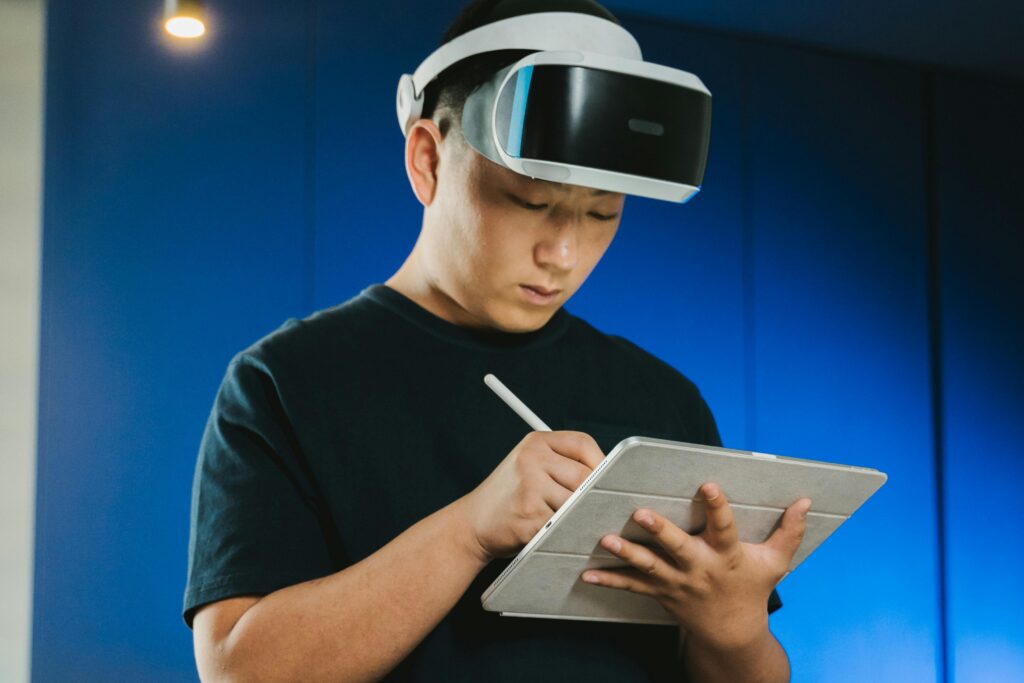
Image: Pexels
The future of augmented reality (AR) in manufacturing is set to be reshaped by several cutting-edge innovations. As companies strive for greater efficiency and precision, ergonomic AR devices are becoming more prominent, providing comfort and usability for extended periods on the factory floor.
Digital twin partnerships are emerging as a powerful tool for simulating production processes. By creating virtual replicas of physical systems, manufacturers can anticipate potential issues and optimize operations before implementing changes in real-world environments. This proactive approach is crucial for reducing downtime and enhancing productivity.
Virtual prototyping techniques are also gaining traction, allowing for the rapid iteration of product designs. These techniques enable manufacturers to visualize and refine products early in the development cycle, minimizing costly errors and accelerating time-to-market.
The integration of edge computing and IoT with AR is another transformative trend. This combination facilitates real-time data processing and predictive maintenance, reducing the likelihood of unexpected equipment failures. By processing data closer to where it is generated, manufacturers can achieve quicker insights and responses, further enhancing operational efficiency.
As AR continues to evolve alongside IoT and edge computing, tools like RealVNC Connect will play a growing role in enabling real-time collaboration between smart devices and remote operators, particularly in time-sensitive manufacturing operations.
Immersive operator training systems are set to revolutionize workforce development. These systems provide realistic simulations that improve skill acquisition and safety awareness, ensuring that employees are better prepared for their roles. As AR technology continues to evolve, it promises to drive significant advancements in manufacturing processes, setting the stage for next-generation production methods that are safer, more efficient, and highly adaptable.
Final Words
In the rapidly advancing field of augmented reality in manufacturing, tangible improvements in operational workflows are already reshaping how factories operate. By integrating digital overlays and interactive tools, manufacturers gain real-time insights that enhance efficiency and accuracy across processes. Real-world applications show significant ROI, validating AR’s role in digital transformation. When paired with a secure remote access solution like RealVNC Connect, these systems can operate more reliably while meeting growing cybersecurity demands.
Augmented reality continues to evolve, offering promising future trends that will further harness its potential for smarter, more efficient manufacturing environments. An effective AR solution can integrate with AI technologies to improve tasks like troubleshooting and inspection, while also ensuring employee safety by providing critical information within the user’s field of view.
If you’re keen to explore how AR and RealVNC Connect work hand in hand, visit the RealVNC Connect download page and get started today.
FAQs in Augmented reality in manufacturing
What are some examples of augmented reality in manufacturing?
Augmented reality in manufacturing examples includes using digital overlays for real-time process guidance, smart glasses for worker training, and interactive maintenance support systems to streamline operations and increase efficiency.
How is augmented reality used in the manufacturing industry?
Augmented reality is used in manufacturing to improve operational workflows by blending digital visualizations with the physical environment. This integration enhances training, maintenance, assembly, and quality control through real-time contextual information.
What are the applications of AR and VR in manufacturing?
Applications of AR and VR in manufacturing include visual quality inspection systems, hands-free assembly guidance, and remote troubleshooting solutions. These technologies help reduce errors, downtime, and enhance overall operational efficiency.
How does augmented reality work?
Augmented reality works by overlaying digital information onto the physical world. It uses devices like smart glasses or tablets to provide real-time data visualization and interactive guides that enhance operational tasks.
What are the differences between augmented reality and virtual reality?
The primary difference between augmented reality and virtual reality is that AR enhances the real world with digital overlays, while VR creates a fully immersive virtual environment, disconnecting users from the physical surroundings.
What are the main types of augmented reality?
The main types of augmented reality include marker-based AR, markerless AR, and projection-based AR. Each type employs different methods to overlay information onto the real world, using either markers, sensors, or projections.
How is virtual reality used in manufacturing?
Virtual reality is used in manufacturing for training simulations, design evaluations, and virtual prototyping. This technology allows for an immersive experience in a simulated environment, enabling effective risk-free testing and assessments.

